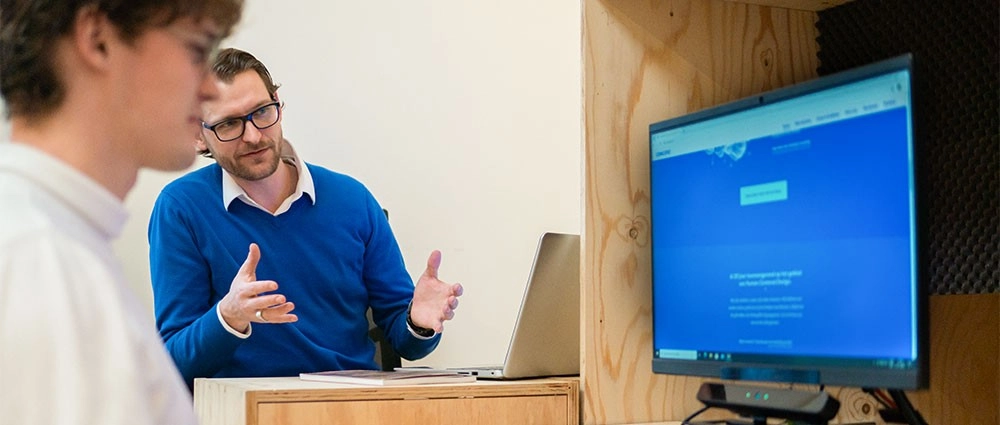Do you find it difficult to find the right people for your user research? Recruiting respondents is sometimes disappointing because of everything involved. To help you prepare for this and avoid surprises, especially the first time, we have written four articles with practical tips.
In part 1 let you learn how to prepare respondent recruitment properly, what to look out for and what is a useful approach.
Part 1 - Preparing the recruitment, read on: Part 2 | Deel 3 | Deel 4
Start recruiting respondents for qualitative user research
Qualitative user research provides valuable insights that benefit a product, service, concept and/or process. However, recruiting the right respondents for user research* is often underestimated in terms of time and energy. Especially for the first time. This can be at the expense of planning, resulting in missed deadlines in some cases.
Many times this is because:
Finding (suitable) respondents is proving more difficult than expected.
A lot of people are expected to respond. A common problem is that the surveys often take place during office hours, making it inconvenient for many people to take part because they are at work.
Scheduling of respondents often gets squeezed because a respondent is already scheduled at the time another respondent can and/or because respondents cancel.
Respondents are provided with incomplete instructions and therefore get confused.
It is too easily assumed that respondents will turn up.
With the tips in this series, you will reduce the chances of wasting valuable time, stress and frustration.
* Moderated user research is a form of user research in which a test supervisor is present. An 'unmoderated user study' does not.

1. Required data
Before you start recruiting respondents, it is wise to check whether recruitment for the user survey is feasible/realistic in terms of time and/or budget. Therefore, we recommend starting by surveying the following data:
A. Length of sessions
Is the estimate that each session will take around 60 minutes? Then you can quickly calculate how many sessions you can do in a day.
B. Number of respondents
The number of respondents needed depends on the purpose of the user survey. When you multiply the duration of the session by the number of respondents, you know how much time (and therefore how many days) you need for the survey.
TIP: Remember to also schedule time to process your interviews with respondents.
How many respondents do you need?
The number of respondents required depends on the approach of the user survey:
Inspire - Qualitative, not a tight protocol and intended to detect insights and hunches for follow-up research: 12-20 respondents
Evaluate - To test whether expectations match reality and to identify bottlenecks: 5-10 respondents
Validate (qualitative) - To provide evidence of a particular pattern: Minimum 30 respondents, desirable is 40 or more.
C. Number of examination days (required)
If you do the following calculation, you will know how many research days you need: (session duration × number of respondents) ÷ number of hours you have to spend per day.
Example:
A session lasts 60 minutes, and you need 16 respondents. That means you need at least 2 days to cover all the respondents.
D. Examination date(s)
If you do not (yet) know exactly how many days are needed to conduct the user research, you can calculate it using the information above.
Should one day have been factored in for user research and it turns out from the above that several research days are needed, you know you have a problem.
E. Research site
The research location should have a space with all the necessary facilities. For example, you can organise the survey at the office, or at an external location that might be more accessible to respondents. We always ensure that there is a space with the following facilities:
Table with chairs
Internet (connection)
Power points
If less able-bodied respondents come; accessible for wheelchair, for example
By external locations, you can think of:
A professional UX research lab
Meeting rooms
External workspaces

Tip 1: Spend a maximum of 6 hours in a day on research
It is recommended to spend a maximum of 6 hours in a day on (moderated) user research. Such days are intensive and require a lot of (mental) energy! Also, the chance of framing (read; influencing) increases after these 6 hours, in both the research supervisor and the observer(s), so it is wiser to continue the research at a later time (e.g. the next day).
Tip 2: Better too many respondents than too few
Provide some spare/extra time slots, that is; more respondents than needed. It frequently happens that people do not show up or are unable to attend anyway. Another common cause of no-shows is that such a survey is seen as optional. So rather too many respondents than too few!
Tip 3: Don't forget your lunch, calculate a buffer time
Factor in buffer time every so many respondents with a break. And don't forget your lunch! Should you run late due to latecomers or technical glitches, you can make up for it with this buffer time.
Tip 4: Don't underestimate how long it takes to recruit respondents
Provide sufficient time for recruitment. The time you need depends, among other things, on the number of people you will approach (or plan to approach) and the complexity of your target audience. Starting recruitment a week in advance is an extreme minimum. Two weeks is also pretty tight. Don't underestimate this and start recruitment on time.
2. Remuneration and travel expenses
On the one hand, you want to avoid respondents doing something only because there is a fee attached. On the other hand, you will find that it is actually easier to recruit respondents by having a. A fee also shows that you value participants' input more.
Think about the compensation(s) (incentive) you will offer respondents before you start recruiting. For example, there is a difference in what you ask of your respondents. Physically testing a product on location is very different from asking someone to come to your office for an interview.
To arrive at the right compensation, it is good to think about the form of remuneration, travel allowance and who provides the incentives.

A. Beloning (incentive)
What respondents receive in return for their participation. For example:
Geld
Korting
Cadeaubon
B. Travel allowance
Are respondents reimbursed for their travel expenses, and if so, what? For example:
€0.19 per kilometre (if by car)
Fees for public transport
C. Who provides the incentives?
To avoid sloppy handling, it is wise to agree who will be ultimately responsible for handling the fee(s). For example:
The person who also does (or has done) the recruiting)
The test supervisor
The administrative assistant
Or in case of outsourcing; the external party (hired person or company)
Tip 5: Provide reasonable pay and compensation.
Keep in mind that the incentive can affect the number of sign-ups. The higher the value of the incentive, the more extrinsic motivation is addressed instead of intrinsic motivation. This is not necessarily a bad thing, but be aware of it. After all, this can affect the quality of your respondents. This is known as the "Overjustification Effect "*.
* The "overjustification effect" occurs when an expected external incentive such as money or prizes lowers a person's intrinsic motivation to perform a task.
3. Recruiting respondents
Finally, think about which channel and/or medium you will use to recruit respondents. Consider the following options:
Online, you can recruit respondents, for example, through :
Mailing
Pop-up on website
Advertising (e.g. on Facebook)
Offline, you can recruit through, for example:
Brochure/flyers
Application in a (local) magazine
Telephonic approach to people from the customer base
.
You can also choose to have an external party recruit respondents for you.
Tip 6: Work with a screener
If necessary, use a screener* to make sure you get the right respondents. It may happen that people think they meet the right specifications/requirements, but turn out not to meet them, or doubt them. With the screener, there is still the possibility of doing a passive analysis. However, be aware that this imposes an extra threshold for potential respondents, which may result in a lower number of submissions.
*Screener is a questionnaire used when recruiting respondents to ensure that participants (actually) meet certain criteria and are therefore part of the target audience.
Read more: How to trigger respondents to sign up
In this first article in the series 'recruiting respondents for qualitative user research', you have been able to read how to prepare to recruit respondents, what is a good remuneration or travel allowance and how best to approach respondents.
In the second article, we focus on respondent sign-up. How do you ensure the right trigger to the sign-up form and what should this form look like?
Instantly see all the steps for recruiting respondents for a qualitative user survey? Download Concept7's white paper.
Read more:
Part 2 - The Respondent's Registration
Part 3- Contacting the respondent
Part 4- Sending a reminder, planning for the day and what happens after the examination?
Meld je aan voor onze nieuwsbrief en ontvang maandelijks praktische inzichten, tips en tricks om je op weg te helpen naar online groei!
Vul hieronder jouw e-mail in en ontvang direct een handig weetje 🙂
